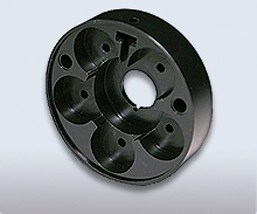
What Materials Are Used in Rubber Molding?
Rubber molding services are a good solution for businesses that need custom parts for various applications. At Clark Rubber and Plastic, we produce customized rubber components that match the dimensions and production value of each project. To create these products, we use materials like natural rubber, neoprene, and nitrile. Here’s more information about the molding process and the materials and equipment we use:
Rubber Molding Process
Rubber molding is the process of turning raw materials into unique shapes that serve a functional purpose in many applications. Manufacturers in the automotive, solar, and home appliance industries use rubber parts as seals, gaskets, tubing, and anti-vibration pads. The molding process begins by selecting a rubber type and adding it to a high-heat chamber. In this chamber, the rubber melts to become more pliable. Once the melted rubber has an even consistency, it enters a mold or die, where it is formed into a unique shape. After the molded rubber cools, manufacturers cut it to size to match the project’s requirements. The final rubber components are then ready to be shipped to the customer.
Rubber Types
Depending on the specifications of your project, you can choose from uncured rubber materials like natural, liquid silicone, ethylene propylene diene monomer (EPDM), nitrile, and neoprene rubber. Some rubber types, like EPDM and neoprene, are more resistant to heat and chemicals. These characteristics make the material ideal for creating components that will be used in engines and environments exposed to extreme weather. Natural rubber has significant rebound resilience and flexibility, making it useful for products like seals and gaskets. If you are unsure which rubber is most suitable for your project, our team will recommend rubber types that will resist damage, offer flexibility, and remain durable over time.
Colorants
To create a fully customized rubber product, you can select a colorant. Manufacturers add the colorant to the prepared rubber before heating it to confirm the materials melt and combine evenly. This process results in a solid-colored rubber product that matches your business’s branding or the intended application.
Melting Chambers
After combining colorants and uncured rubber materials, manufacturers pour the mixture into a hopper that leads to the heating chamber. While in the chamber, the materials are heated until they melt and are ready to be placed into the mold. These machines may have dryer components that keep moisture away from the rubber as it melts, preventing contamination.
Molds
Rubber molds are typically made from metal materials to confirm the melted rubber is held firmly in place as it cools. Some molding methods include injection, compression, and transfer. Our team will recommend a molding process that matches your product type to make the production as efficient as possible. The mold may be designed to produce a single part or multiple components at once, with specific dimensions for each project.
Explore Rubber Molding Services
Clark Rubber and Plastic offers molding services to companies in various industries. We use computer numeric control equipment to make sure your products are as precise as possible. This equipment also allows us to produce a high volume of rubber components in a short amount of time. Contact our team today to learn more about our molding processes for rubber and plastic parts.
